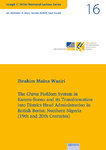Categories ARCHÄOLOGIE ALS KULTURWISSENSCHAFT Reihe_Studien_zur_Archaeologie_und_Geschichte_A... Band 6: Predynastic Settlements near Armant
Band 6: Predynastic Settlements near Armant
Product no.: ISBN 978-3-927552-15-9
In stock
can be shipped within 10 days
50.00 €
Price incl. VAT, plus Shipping
Customers who bought this product also bought
|
|
|
|
|
|
* Prices incl. VAT, plus Shipping
Browse this category: Reihe_Studien_zur_Archaeologie_und_Geschichte_Altaegyptens









































